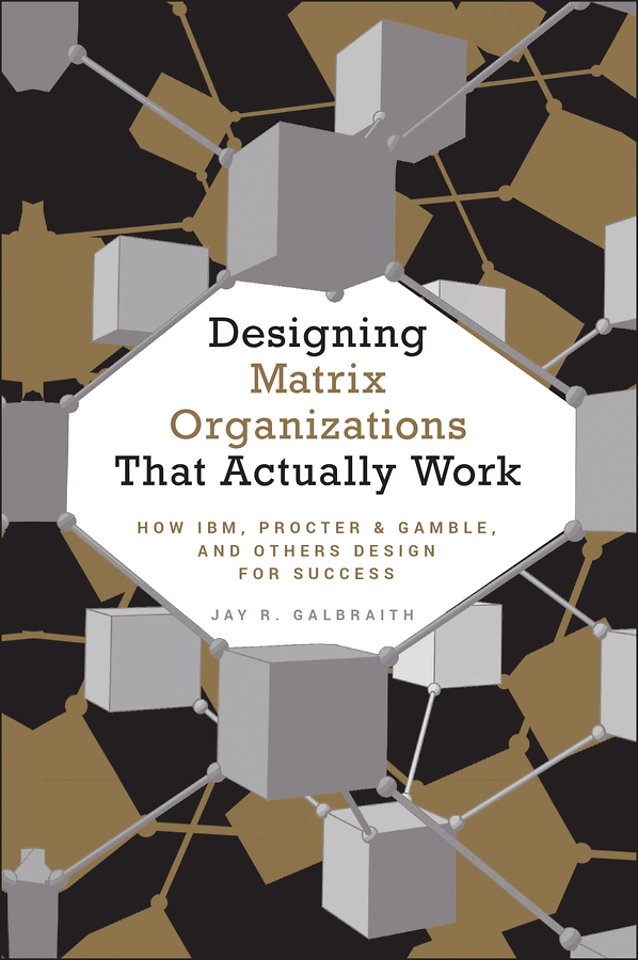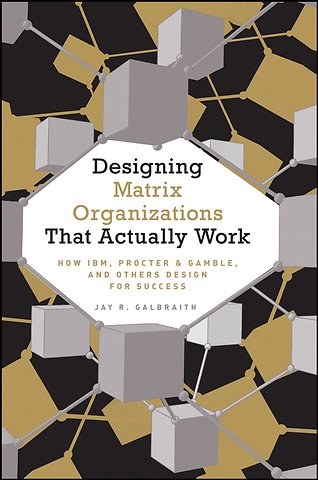Designing Matrix Organizations that Actually Work
How IBM, Proctor & Gamble and Others Design for Success
Samenvatting
Organization structures do not fail, says Jay Galbraith, but management fails at implementing them correctly. This is why, he explains, the idea that the matrix does not work still exists today, even among people who should know better. But the matrix has become a necessary form of organization in today's business environment.
Companies now know that if they have multiple product lines, do business in multiple countries, and serve many customer segments through a variety of channels, there is no way they can avoid some kind of a matrix structure and the question most are asking is "How do we learn how to operate the matrix effectively?" In Designing Matrix Organizations That Actually Work, Galbraith answers this and other questions as he shows how to make a matrix work effectively.
Specificaties
Inhoudsopgave
Introduction: Matrix Organizations: What Are They? Where Did They Come From?
What Is a Matrix?
What Are the Origins of the Matrix?
What Happened?
The Star Model.
Implications of the Star Model.
PART ONE: SIMPLE MATRIX ORGANIZATIONS.
1. Simple Matrix Structures.
Two–Dimensional Structures.
Pharmaceutical R&D Lab Example.
Summary.
2. The Two–Hat Model.
What Is the Two–Hat Model?
Examples of Two–Hat Structures.
Summary.
3. The Baton Pass Model.
The Consumer Goods Model.
The Pharmaceutical Model.
Summary.
4. The Matrix Within a Matrix.
Design Challenges of the Matrix Within a Matrix.
Matrix Within a Matrix at the Corporate Level.
Mars Pet Food Example.
Summary.
5. Balancing Power and Defining Roles.
Designing Power Bases.
Roles and Responsibilities.
Summary.
PART TWO: COMPLEX MATRIX STRUCTURES.
6. The Three–Dimensional Matrix.
International Strategy.
The Geography–Dominant Matrix.
The Balanced Matrix.
The Business–Dominant Matrix.
Differentiated Structures.
Other Three–Dimensional Models.
Summary.
7. More Complex Matrix Structures.
Global Account Teams.
The Front–Back Hybrid Model.
Summary.
8. The IBM Structure.
The IBM Front–Back Hybrid.
More Complexity?
Summary.
PART THREE: COMPLETING THE STAR MODEL.
9. Communication in the Matrix.
Informal Communication.
Formal Communication.
Summary.
10. Planning and Coordination Processes.
Goal Alignment, Dispute Resolution, and Coordination Mechanisms.
Summary.
11. Planning Processes in the Complex Matrix.
What About Complex Matrix Designs?
Get the System in a Room.
Online Processes.
Summary.
12. Human Resources Policies.
Human Capital.
Social Capital.
Summary.
13. Leadership in a Matrix Organization.
Seeing That Conflicts Are Resolved.
Managing the Top Team.
Balancing Power.
Summary.
14. Implementing a Matrix.
Using the Star Model.
Building Capabilities.
Summary.
15. A Synopsis of Matrix Capabilities.
Epilogue: Personal Stories: The Use and Abuse of the Matrix.
Early Phase: "What Is a Matrix, Anyway"?
Matrix Takes Off and Becomes Trendy.
The Phase of Decline.
The Stealth Matrix Phase.
Today: Matrix out of the Closet.
References.
About the Author.
Index.
Anderen die dit boek kochten, kochten ook
Net verschenen
Rubrieken
- aanbestedingsrecht
- aansprakelijkheids- en verzekeringsrecht
- accountancy
- algemeen juridisch
- arbeidsrecht
- bank- en effectenrecht
- bestuursrecht
- bouwrecht
- burgerlijk recht en procesrecht
- europees-internationaal recht
- fiscaal recht
- gezondheidsrecht
- insolventierecht
- intellectuele eigendom en ict-recht
- management
- mens en maatschappij
- milieu- en omgevingsrecht
- notarieel recht
- ondernemingsrecht
- pensioenrecht
- personen- en familierecht
- sociale zekerheidsrecht
- staatsrecht
- strafrecht en criminologie
- vastgoed- en huurrecht
- vreemdelingenrecht







